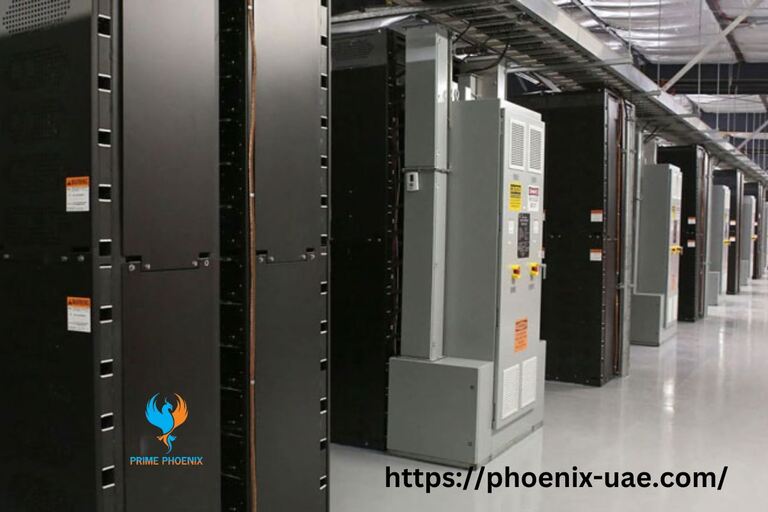- Ras Al Khor Industrial Area 2
- +971 4 330 2170
- +971 547919584
Power outages occasionally occur, potentially endangering occupants inside a building if emergency lighting fails. Central battery systems provide a robust emergency power solution, offering crucial illumination when normal lighting goes dark. This backup power protects human life by marking clear exit paths if an emergency evacuation becomes necessary.
What is a Central Battery System?

A central battery system also called a central power system, provides emergency electricity from central inverter batteries to regular and emergency lighting fixtures throughout a facility. Unlike individual battery packs connected to separate luminaires, a central battery system centrally powers multiple lighting units, monitoring and charging the batteries, testing the system, and automatically switching to backup power when the main supply gets disrupted.
Central battery systems consist of two core elements – an inverter unit containing batteries and a network of hybrid luminaires wired to the inverter. The inverter charges and monitors the batteries, converts DC electricity to AC power for the lighting fixtures, and manages system testing and emergency activation functions. The connected luminaires operate normally on mains power. If an outage occurs, the inverter instantly switches them to a backup battery supply.
Benefits of Central Battery Lighting Systems

Superior Reliability – Central systems offer enhanced reliability compared to unit equipment. The central inverter monitors battery health, provides maintenance charging, and automatically runs periodic system tests. This ensures emergency lighting will function when required.
Flexible Testing – Installers can schedule automatic periodic system tests for convenient times to avoid workplace disruptions.
Central Monitoring – System status, battery condition, and faults are displayed on the inverter’s LCD screen and are communicated to connected remote monitoring systems.
Simplified Compliance – Central systems readily provide the monitoring and reporting needed to comply with emergency lighting standards. This streamlines mandated regulatory inspections.
Energy Efficiency – Central inverters use efficient battery charging and electronic ballasts to conserve energy.
Cost-effectiveness – Centralized emergency power reduces installation and maintenance costs compared to unit battery systems. Less backup batteries get utilised overall.
Flexible Illumination – Central systems maintain emergency lighting levels necessary for safe egress, evenly distributed where needed throughout a building.
Uninterrupted Transitions – When outages occur, central batteries deliver uninterrupted power for smooth, flicker-free transfers to emergency mode.
Installation Process of Central Battery Systems
Properly installing a central battery system requires expertise and attention to detail to ensure correct wiring, connections, and configuration. Here is an overview of the key steps:
Site Survey – The installer first surveys the site to understand the facility’s layout, emergency lighting needs, and electrical infrastructure. This allows them to design an appropriately sized system with the inverter and luminaire placement optimised for reliability and illumination coverage.
Electrical Prep – Next, the necessary electrical conduit, wiring, and junction boxes must be installed to support connecting the inverter unit and luminaires. The system wiring should be kept separate from normal lighting circuits.
Inverter Mounting – The central inverter gets securely mounted in an accessible indoor location with adequate ventilation, often in an electrical room. The ideal mounting height depends on the inverter design.
Battery Installation – Sealed lead-acid batteries are wired and mounted into the inverter unit according to the manufacturer’s specifications to provide the required backup time capacity. Larger systems sometimes use external battery cabinets.
Luminaire Installation – Hybrid luminaires containing both normal and emergency lamps are installed throughout the facility. They are wired back to the central inverter location.
Wiring – With repetitive testing, installers carefully wire the entire system – inverter to luminaires – using the appropriate gauge wire based on lighting load levels and circuit distances.
Programming – The system gets programmed for testing intervals, battery recharge times, and other parameters. Emergency lighting circuits are mapped.
Commissioning – Initial testing commences to ensure all connections are correct, the system functions properly on battery power, and the illumination levels are adequate.
Documentation – Installers provide documentation on the system design, configuration, layout, wiring, and components for operational and maintenance needs.
The installation process requires expertise in emergency systems, electrical work, and the central battery product. Proper installation is crucial for central battery systems to deliver their full advantages. Facilities can rely on experienced technicians like those from Prime Phoenix to handle their centralised emergency lighting installations.
Applications Suiting Central Battery Systems
Centralised emergency lighting suits a wide range of commercial, industrial, and institutional settings, including:
- High-rise buildings
- Arenas
- Healthcare facilities
- Retail stores
- Educational institutions
- Manufacturing plants
- Warehouses
- Public venues
- Hospitality sites
- Transportation hubs
- Government buildings
Any large facility where safety requires reliable illumination for navigation during power disruptions can benefit from a central battery system.
Popular Central Battery Power Brands
Several reputable manufacturers supply central emergency lighting systems. These brands offer monitoring, testing, and reporting functions; battery backup capacity options; and hybrid luminaires needed for comprehensive centralised emergency lighting.
Top global providers of central battery systems include:
- Philips
- Schneider Electric
- Honeywell
- Eaton
- Beghelli
- Hubbell
- Legrand
- Emerson
Prime Phoenix - Your Partner for Central Battery Systems in UAE

As an expert in fire protection and security solutions, Prime Phoenix provides and installs advanced central battery lighting systems to customers throughout UAE. We offer extensive product options from the world’s leading brands. Our experienced technicians design, install and maintain centralised emergency power systems customised to your unique requirements. Trust Prime Phoenix as your partner for reliable central battery system suppliers in UAE and ensure safe illumination when you need it most.
Conclusion
Central battery systems deliver smart centralised backup power for emergency lighting when mains electricity gets disrupted. This provides vital illumination for safe evacuation and navigation within a building during outages. Central battery systems outperform individual unit batteries through advanced monitoring, automated testing, comprehensive reporting and reliable emergency operation. By choosing Prime Phoenix, a leading central battery system supplier in UAE, organisations and facilities can have expertly engineered central battery systems installed to protect occupants and comply with emergency lighting regulations.
